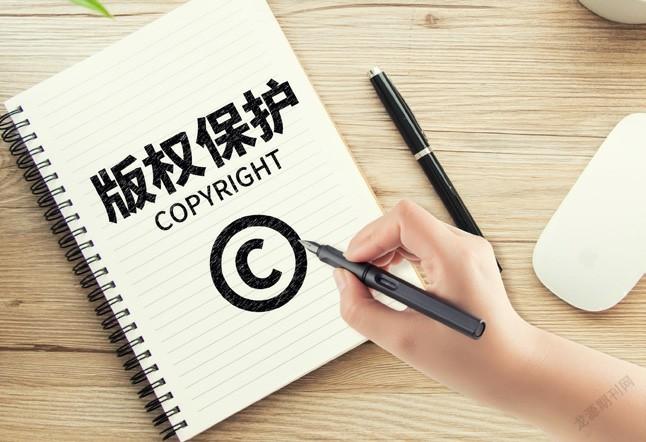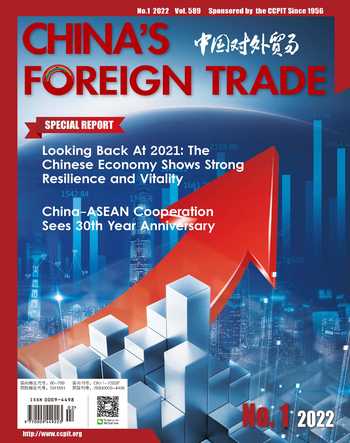Joint Effort to Resolve Disputes in Intellectual Property Rights
By Guo Yan
Recently, at an intellectual property dispute mediation seminar held by the CCPIT Mediation Center, a second batch of 10 experts appointed by the intellectual property professional committee was announced. These 10 experts are senior scholars, former judges and intellectual property experts with significant influence in the field of intellectual property in China and abroad. They have a lot of varied working experience and deep theoretical knowledge in the settlement of intellectual property disputes.
Lu Pengqi, Deputy Chairman of the CCPIT and chairman of the CPPIT Mediation Center, said at the seminar that as a trade and investment promotion agency, the CCPIT has been attaching great importance to resolving intellectual property disputes through arbitration and mediation when connecting with government and enterprises, combining both internal and external forces, and dealing with customer demands. Especially in promoting the application of mediation in the field of intellectual property dispute resolution, the CCPIT Mediation Center plays an active role.
Mediation in intellectual property disputes gradually known by the public
Traditionally, intellectual property disputes are mainly resolved through litigation and administrative means. With the increasing shortage of judicial and administrative resources, it is more common to resolve intellectual property disputes in the commercial context through non-confrontational means such as arbitration and mediation.
Since 2020, intellectual property disputes have become the type of disputes with the largest number of mediation cases in national trade promotion. Market entities all over the country have increasingly strong demand for more diversified solutions for intellectual property disputes.
In September 2021, with the purpose of promoting applications of mediation in intellectual property dispute resolution, the CPPIT Mediation Center set up an intellectual property committee to appoint 10 Chinese and foreign experts as committee members. The committee also formulated and issued China’s first commercial dispute mediation rules for solving foreignrelated intellectual property disputes in China, and also intellectual property dispute mediation rules of the CPPIT and CCOIC mediation center.
Experts attending the seminar believed that under the guidance of the national 14th Five-Year Plan and the strategy of building a country with strong intellectual property rights, China’s high-quality development is inseparable from strong intellectual property rights. As an important link in the protection of intellectual property rights, intellectual property mediation has ushered in new development opportunities.
Su Chi, former president of the Beijing Intellectual Property Court, said that with the continuous development of scientific and technological innovation, the level of intellectual property protection has also been greatly improved and strengthened. Also, as the business environment improves and the social credit system develops, intellectual property mediation will make further progress. The CCPIT Mediation Center is an important platform and will play a larger role in intellectual property mediation work. Significant changes will take place in the future.
Kong Xiangjun, professor of Shanghai Jiaotong University, pointed out that as the social economy develops, the types of intellectual property disputes are becoming increasingly diversified. Infringement identification, evidence collection and compensation will become more difficult. Mediation can be used to reach common ground, and has many unique advantages in international parallel litigation to avoid greater economic losses.
Ma Yide, professor of the University of Chinese Academy of Sciences, said that as the world is suffering from a new round of the COVID-19 pandemic, the global competition landscape has also undergone profound changes, and the global innovation and value chain are being reshaped. In 2021, China formulated the outline of building a country with strong intellectual property rights. Science and technology were also taken as a national priority in the 14th Five-Year Plan and the outline of long-term goals for 2035.
The development of science and technology is inseparable from the protection of intellectual property rights, and intellectual property mediation will play a more important role. He mentioned: “if mediators work together to settle a batch of influential cases and accumulate successful experiences of mediation, these practices can provide a basis and path for our country’s legislation.”

Lu Pengqi said that for the next step, we should continue to give full play to the role of the intellectual prop-erty committee. We should carry out various activities through innovation, narrow the distance from enterprises, respond to corporate demands timely and actively, and bring true mediation services to industry businesses. On top of that, we shall continue to expand the team of professionals and carry out extensive cooperation. The creation, application, protection, management services of intellectual property require joint participation from the entire society. The professional committees should make extensive exchanges and cooperation, unite their efforts and release full potential.
Mediation before litigation useful for reaching a win-win situation
Mediation has a unique strength in resolving intellectual property disputes for its confidentiality, flexibility and peaceful settlement of cases. It is conducive to the development of the market economy. Mediation is carried out before litigation, which enables win-win cooperation between the rights party and the infringement party.
Yuan Xiaozhen, judge in the intellectual property tribunal of the Supreme People’s court, has been very impressed by the role of mediation. She said in recent years, the number of intellectual property cases the court received has been increasing fast. Mediation has a great significance in resolving cases. It is flexible in its timing, and can be utilized either before, amid or after litigation. Mediation can play a role before litigation, and also be combined with judgement during the process of litigation. After the court opens and cases become clear, the mediator and judge can work together to do the mediation work. In the mediation process, the court can exchange information with the mediation center. For involved parties, the rights party could receive mediation payment faster, without the long waiting of the third trial to the application for execution. Also for the defendant, the mediation fee is lower than the costs associated with litigation. ”
Seeing the advantages of mediation in litigation and resolving disputes, many judicial institutions and intel- lectual property departments have successively issued relevant policies to strengthen the practical application of combing litigation and mediation.
In December 2020, the Supreme People’s Court and the National Intellectual Property Administration issued a notice on the establishment of an online litigation-mediation docking mechanism for intellectual property, so as to effectively front the mechanism of non-litigation dispute resolution. This policy has achieved a good outcome. Since January 2021, more than 250 intellectual property dispute mediation organizations have stationed on the mediation platform of the People’s Court. By November 2021, the mediation platform received a total of more than 25 thousand mediation cases and the mediation success rate reached 75%. As more and more local mediation institutions get registered on the platform, the local intellectual property management departments have also established docking mechanism with the local courts to enhance protections of intellectual property rights.
Fu Mingxing, Director of the Intellectual Property Protection Department of the State Intellectual Property Office and first-class investigator, said that the prominent feature of intellectual property disputes is that they require very strong professional knowledge, especially in cases involving patents. Therefore, the requirements for mediators and mediation organizations are relatively high. In order to ensure that mediation organizations and mediators are able to provide professional services, it is imperative to adopt market-oriented methods, such as a government purchase of services and subsidies for case handling, or offering their support in other ways. The purpose is to maintain the operation of mediation organizations and the ability for mediators to work.
In recent years, the Beijing High People’s court has exercised diversified mediation, litigation and rapid trial to resolve disputes. It further optimized the whole procedure of case filing, case distribution, mediation, litigation and rapid trial to effectively resolve a large number of disputes before litigation.
Sun Biao, judge of the Beijing High People’s Court, pointed out that we should cultivate non-litigation forces to resolve disputes and front the nonlitigation dispute resolution mechanism. The court shall become the last line of defense for dispute resolution, rather than the first line of defense or the only line.
However, Sun Biao admitted that at present, the success rate of diversified mediation of intellectual property disputes is not high, mainly because it still lacks a comprehensive legal system for intellectual property dispute mediation, and the social atmosphere of using mediation to resolve intellectual property disputes has not formed. What’s more, social support for intellectual property dispute mediation will be improved. It is also important to strengthen the systematic training and evaluation for mediators, so as to improve the professional abilities of mediators and make mediation services better tailored to social development and social needs.
In view of the challenges such as the underdevelopment of China’s commercial mediation market, the lack of unified standards and norms or the mediation profession, the imperfect legal system and talent team, Tan Jian, Secretary General of China Academy of Arbitration Law, gives the following suggestions: first, considering the new level of international competition in intellectual property, plan the development of the intellectual property mediation business and learn from the most experiences of international mediation institutions; second, it is important to mobilize external resources, create developmental synergy of the intellectual property mediation industry and strive to gain support from the Supreme People’s court, national intellectual property authorities, local governments and industry associations, and promote the resolution of disputes locally, amicably and within the industry; third, give full play to the special advantages of the CCPIT in channels, talent and specialties to promote the development of intellectual property mediation business; fourth, expand the intellectual property mediation talent team based on the needs of business development, and give priorities to retired intellectual property judges, legal personnel of companies, experts and scholars when selecting mediators.
- China’s foreign Trade的其它文章
- Looking Back At 2021:The Chinese Economy Shows Strong Resilience and Vitality
- CCPIT Work Meeting 2021 Is Held Virtually in Beijing
- Six Industry Opportunities As A Result of Population Change
- Demands for Coal-fired Power Will Reach New High
- IDC’s Top 10 Predictions on China’s ICT Market In 2022
- Homemaking Industry Boosts Rural Revitalization

